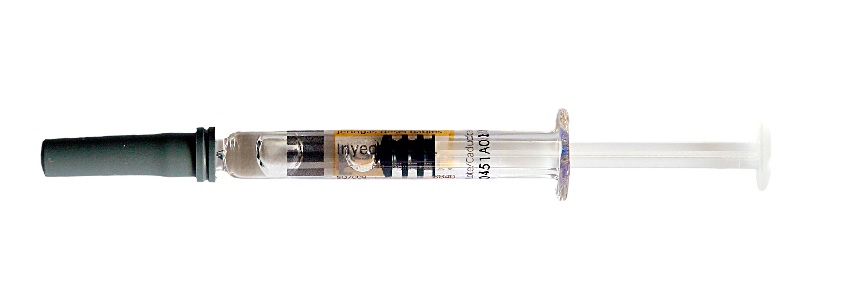Morris County:
During 2013, the most common communicable diseases in Morris County included chlamydia (605 cases), lyme disease (558 cases), chronic hepatitis C (211 cases), Campylobacteriosis (75 cases), gonorrhea (72 cases) and non-typhoid salmonellosis (51 cases). (NJ Reportable Communicable Disease Registry). Of these, chlamydia and gonorrhea are sexually transmitted, lyme disease is tickborne, hepatitis is mostly bloodborne (but also sexually transmitted), and camplyobacteriosis and non-typhoid Salmonellosis are foodborne. Alarmingly, all of these diseases are showing an increasing trend in new cases (incidence) when compared to prior year’s values. For the two sexually transmitted diseases, those aged 20-24 were most at risk of getting them.
While tuberculosis rates are lower than the Healthy NJ 2020 goal, new cases (incidence) appear to be increasing over time (1.4/100,000 in 2010 and 2.4/100,000 in 2013). The HIV/AIDS prevalence rate (the number of people who report having HIV/AIDS) in Morris County is increasing over time as well. It’s well understood that many people with HIV/AIDS don’t know that they have it.
An important strategy for preventing communicable diseases is through vaccination. Childhood vaccination rates during 2013-2014 are slightly lower (96.7%) than the average (mean) rate for all counties in New Jersey (97.0 %). This indicator shows the percentage of enrolled kindergarten students that have received all required immunizations. Required immunizations include 4+ DTP, 3+ Polio, 2+ MMR, 3+ Hep B, and 1+ Var or physician documented varicella disease. Data is unavailable on whether this vaccination rate is different for different segments of the population (e.g. by gender, race/ethnicity, or income). Adult vaccination rates for influenza and pneumonia are slightly better in Morris County when compared to the US rates (median).
Union County:
During 2013, the most common communicable diseases in Union County included chlamydia (1,862 cases), chronic hepatitis C (352 cases), gonorrhea (346 cases), campylobacteriosis (82 cases), lyme disease (78 cases) and non-typhoid salmonellosis (73 cases) (NJ Reportable Communicable Disease Registry). Of these, chlamydia and gonorrhea are sexually transmitted, lyme disease is tickborne, hepatitis is mostly bloodborne (but also sexually transmitted), and camplyobacteriosis and non-typhoid salmonellosis are foodborne.
The rates for chlamydia appear to be relatively stable over time from 2010 to 2013 while the rates for gonorrhea appear to be decreasing over the same period of time. However, adults aged 20-24 still remain the group highest at risk for both of these diseases.
An important strategy for preventing communicable diseases is through vaccination. Union County is doing a good job of ensuring its kindergarteners have the required immunizations, and that adults get flu shots. However, pneumonia vaccinations remain a problem as seen by the slightly higher than average (mean) age-adjusted death rate for pneumonia within the county.
Sussex County:
During 2013, the most common communicable diseases in Sussex County included lyme disease (347 cases), chlamydia (183 cases) and chronic hepatitis C (103 cases) (NJ Reportable Communicable Disease Registry). Of these, chlamydia is sexually transmitted, lyme disease is tickborne, hepatitis is mostly bloodborne (but also sexually transmitted).
The rates for both lyme disease and chlamydia appear to be increasing over time. Females, White individuals, and adults aged 20-24 still remain the group highest at risk for chlamydia (demographic information unavailable for lyme disease).
Tuberculosis rates are lower than the Healthy NJ 2020 goal, but higher than the national Healthy People 2020 goal. New cases (incidence) of Tuberculosis appear to be increasing over time (0.7/100,000 in 2010 and 2.0/100,000 in 2013).
An important strategy for preventing communicable diseases is through vaccination. Childhood vaccination rates during 2013-2014 are slightly lower (96.7%) than the average (mean) rate for all counties in New Jersey (97.0 %). This indicator shows the percentage of enrolled kindergarten students that have received all required immunizations. Required immunizations include 4+ DTP, 3+ Polio, 2+ MMR, 3+ Hep B, and 1+ Var or physician documented varicella disease. Data is unavailable on whether this vaccination rate is different for different segments of the population (e.g. by gender, race/ethnicity, or income). For adults, influenza and pneumonia vaccinations remain a problem as seen by the higher than average (mean) age-adjusted death rate due to influenza and pneumonia within the county. Females are more likely than males to die from influenza and pneumonia.
NJHC is collecting images, stories and videos that "Show Us What Health Looks Like".
Click here to learn more and share your perspective.
We asked leaders across North Jersey to share with us their perspective on what is working and what is not in producing healthy communities. Don't see your perspective here yet? Add your voice by answering a few brief questions.
What's Working?
To download the full Key Informant results,
click here.
Have a program, initiative or strategy that is working to reduce cancer risk in North Jersey? Share it on our
Key Informant Survey, and we'll get it listed here.








